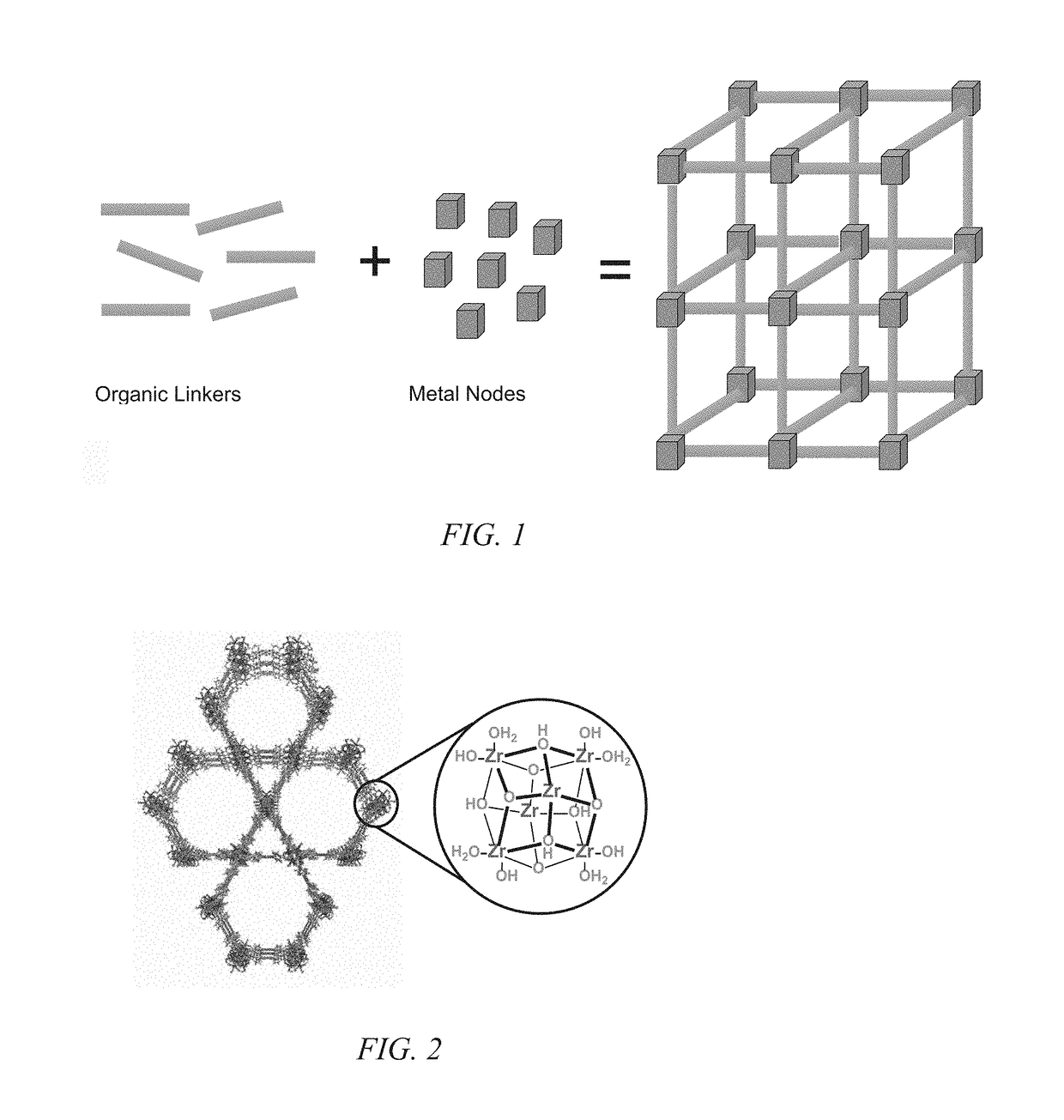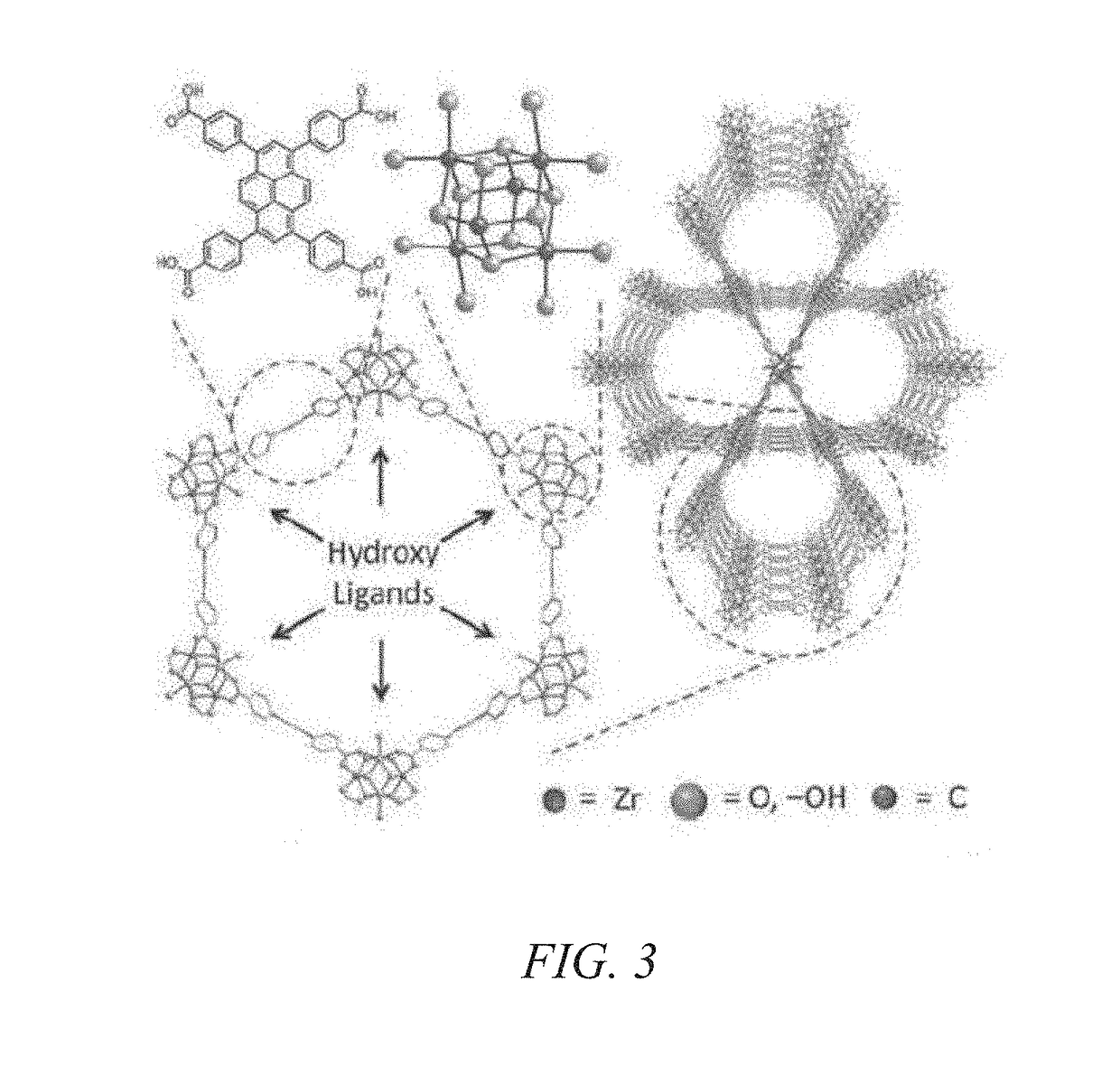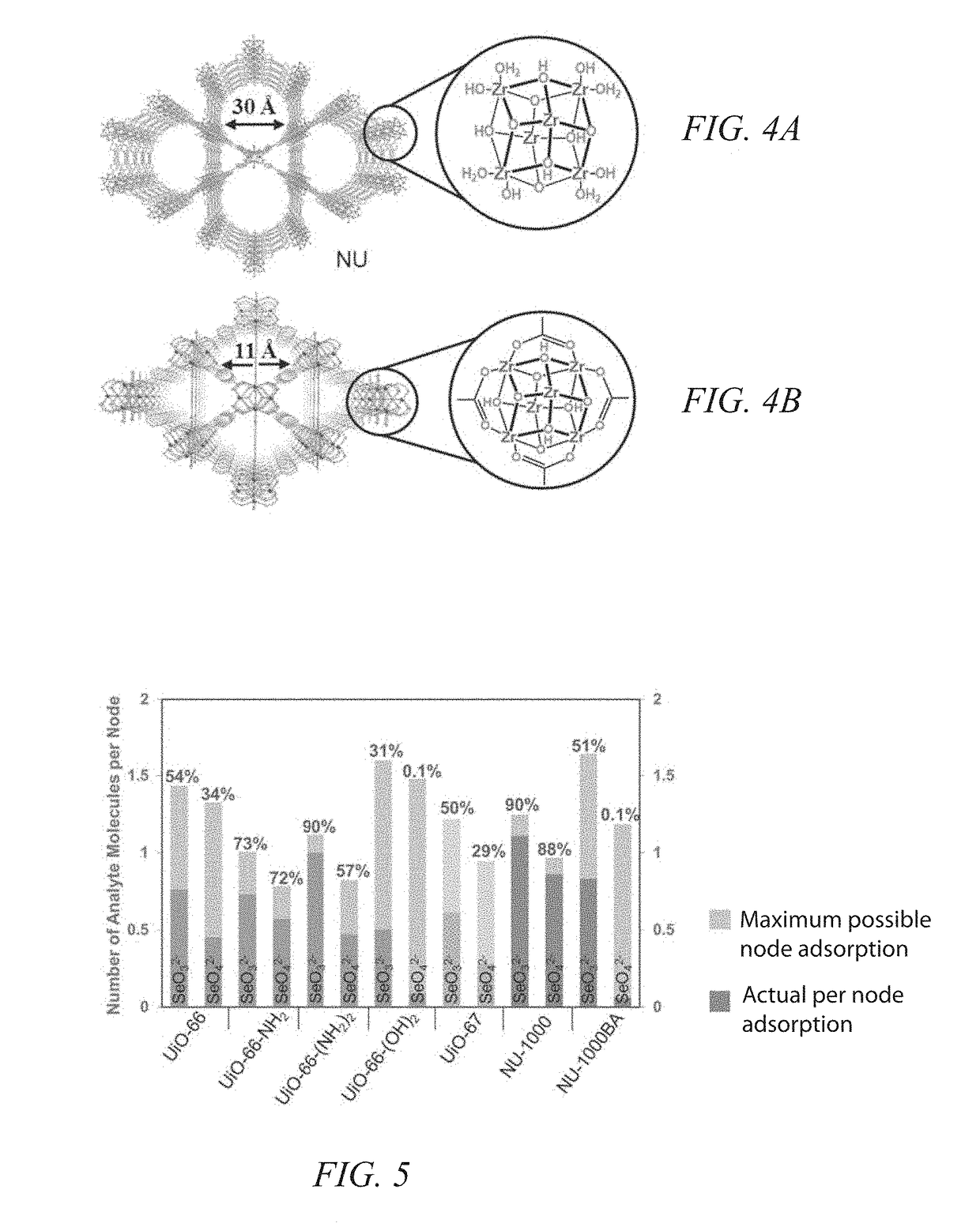Metal-Organic Frameworks for Adsorption of Liquid Phase Compounds
a technology of liquid phase compounds and metal-organic frameworks, which is applied in the direction of ion-exchange treatment of water/sewage, radioactive contaminants, waste water treatment from gaseous effluent, etc., can solve the problems of ligands not being able to accommodate the larger geometry of oxy-anions, current ion-exchange technology lacks the ability to remove these impurities to the extent needed, and fossil-based power generation facilities. problems, to achiev
- Summary
- Abstract
- Description
- Claims
- Application Information
AI Technical Summary
Benefits of technology
Problems solved by technology
Method used
Image
Examples
Embodiment Construction
[0036]The present invention is more fully described below with reference to the accompanying drawings. While the invention will be described in conjunction with particular embodiments, it should be understood that the invention can be applied to a wide variety of applications, and the description herein is intended to cover alternatives, modifications, and equivalents within the spirit and scope of the invention and the claims. Accordingly, the following description is exemplary in that several embodiments are described (e.g., by use of the terms “preferably,”“for example,” or “in one embodiment”), but this description should not be viewed as limiting or as setting forth the only embodiments of the invention, as the invention encompasses other embodiments not specifically recited in this description. Further, the use of the terms “invention,”“present invention,”“embodiment,” and similar terms throughout this description are used broadly and are not intended to mean that the inventio...
PUM
| Property | Measurement | Unit |
|---|---|---|
| Fraction | aaaaa | aaaaa |
| Mass | aaaaa | aaaaa |
| Mass | aaaaa | aaaaa |
Abstract
Description
Claims
Application Information
 Login to View More
Login to View More - R&D
- Intellectual Property
- Life Sciences
- Materials
- Tech Scout
- Unparalleled Data Quality
- Higher Quality Content
- 60% Fewer Hallucinations
Browse by: Latest US Patents, China's latest patents, Technical Efficacy Thesaurus, Application Domain, Technology Topic, Popular Technical Reports.
© 2025 PatSnap. All rights reserved.Legal|Privacy policy|Modern Slavery Act Transparency Statement|Sitemap|About US| Contact US: help@patsnap.com



